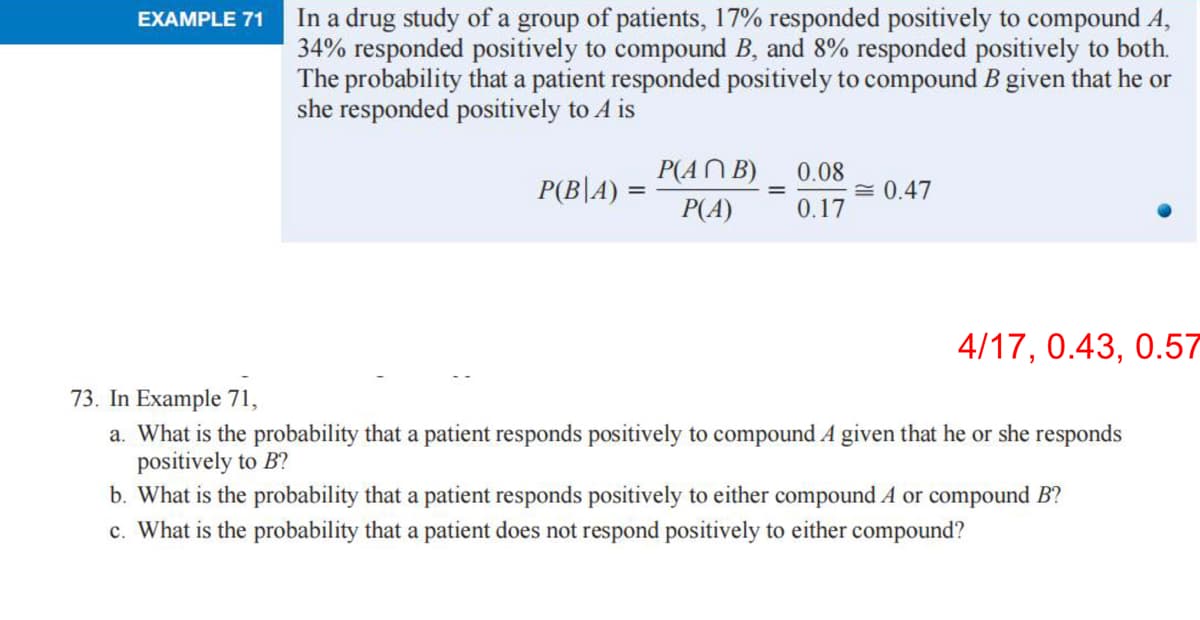EXAMPLE 71 In a drug study of a group of patients, 17% responded positively to compound A, 34% responded positively to compound B, and 8% responded positively to both. The probability that a patient responded positively to compound B given that he or she responded positively to A is P(B|A) = 0.08 P(ANB) P(A) 0.17 = = 0.47 4/17, 0.43, 0.57 73. In Example 71, a. What is the probability that a patient responds positively to compound A given that he or she responds positively to B? b. What is the probability that a patient responds positively to either compound A or compound B? c. What is the probability that a patient does not respond positively to either compound?
EXAMPLE 71 In a drug study of a group of patients, 17% responded positively to compound A, 34% responded positively to compound B, and 8% responded positively to both. The probability that a patient responded positively to compound B given that he or she responded positively to A is P(B|A) = 0.08 P(ANB) P(A) 0.17 = = 0.47 4/17, 0.43, 0.57 73. In Example 71, a. What is the probability that a patient responds positively to compound A given that he or she responds positively to B? b. What is the probability that a patient responds positively to either compound A or compound B? c. What is the probability that a patient does not respond positively to either compound?
Chapter8: Sequences, Series,and Probability
Section8.7: Probability
Problem 10ECP: In Example 10, researchers selected five people at random from the population. What is the...
Related questions
Question
could you write out steps for b and c please

Transcribed Image Text:EXAMPLE 71
In a drug study of a group of patients, 17% responded positively to compound A,
34% responded positively to compound B, and 8% responded positively to both.
The probability that a patient responded positively to compound B given that he or
she responded positively to A is
P(B|A) =
P(ANB) 0.08
P(A) 0.17
= 0.47
4/17, 0.43, 0.57
73. In Example 71,
a. What is the probability that a patient responds positively to compound A given that he or she responds
positively to B?
b. What is the probability that a patient responds positively to either compound A or compound B?
c. What is the probability that a patient does not respond positively to either compound?
Expert Solution
This question has been solved!
Explore an expertly crafted, step-by-step solution for a thorough understanding of key concepts.
This is a popular solution!
Trending now
This is a popular solution!
Step by step
Solved in 2 steps

Recommended textbooks for you


Holt Mcdougal Larson Pre-algebra: Student Edition…
Algebra
ISBN:
9780547587776
Author:
HOLT MCDOUGAL
Publisher:
HOLT MCDOUGAL


Holt Mcdougal Larson Pre-algebra: Student Edition…
Algebra
ISBN:
9780547587776
Author:
HOLT MCDOUGAL
Publisher:
HOLT MCDOUGAL